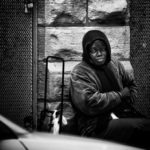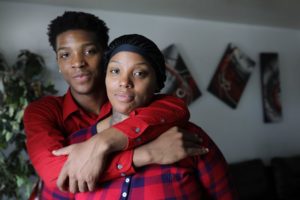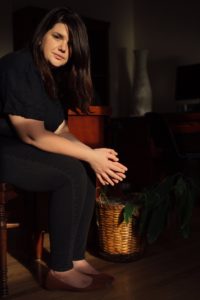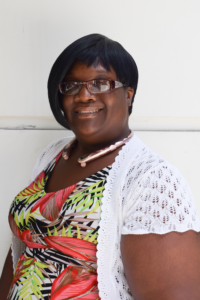August 27, 2019
The Southern Illinoisan: Carbondale City Council votes to eliminate panhandling prohibition
By Isaac Smith
CARBONDALE — After receiving a letter a year ago from the American Civil Liberties Union, the City of Carbondale has decided to repeal its panhandling ordinance.
Last year, the ACLU co-signed a letter with the Chicago Coalition for the Homeless condemning the city’s ordinance against panhandling, and threatened legal action if it was not repealed. The ACLU sent a follow-up letter to the city last month.
… When asked for comment on the decision to repeal the ordinance, Diane O’Connell, a community lawyer for the Chicago Coalition for the Homeless, reiterated the legal reasons for the letter.
“Carbondale is the eleventh city in Illinois to have repealed its panhandling ordinance in the past year. The US Constitution guarantees that everyone has the right to ask for help, and these ordinances violated that mandate,” she wrote in an email Tuesday.
August 25, 2019
WGN Radio: Panhandlers have constitutional rights too
Panhandling is a right to free speech and is guaranteed by the 1st Amendment to the United States and Illinois Constitutions. Diane O’Connell, a lawyer with the Chicago Coalition for the Homeless joins WGN Radio’s Karen Conti to discuss the recent lawsuit against the Village of Downer’s Grove regarding their panhandling laws along with what is and is not constitutional when it comes to panhandling.
August 21, 2019
The New Republic: The New American Homeless
Housing insecurity in the nation’s richest cities is far worse than government statistics claim. Just ask the Goodmans.
By Brian Goldstone
Last August, Cokethia Goodman returned home from work to discover a typed letter from her landlord in the mailbox. She felt a familiar panic as she began to read it. For nearly a year, Goodman and her six children—two of them adopted after being abandoned at birth—had been living in a derelict but functional three-bedroom house in the historically black Peoplestown neighborhood of Atlanta. Goodman, who is 50, has a reserved, vigilant demeanor, her years trying to keep the kids out of harm’s way evident in her perpetually narrowed eyes. She saw the rental property as an answer to prayer. It was in a relatively safe area and within walking distance of the Barack and Michelle Obama Academy, the public elementary school her youngest son and daughter attended. It was also—at $950 a month, not including utilities—just barely affordable on the $9 hourly wage she earned as a full-time home health aide. Goodman had fled an abusive marriage in 2015, and she was anxious to give her family a more stable home environment. She thought they’d finally found one. ..
…Goodman’s predicament is increasingly common as the ranks of the working homeless multiply. The present support system, according to advocacy groups, effectively ignores scores of homeless families—excluding them from public discourse and locking them out of crucial support. This is due, in large part, to the way that HUD tallies and defines homelessness. Every January, in roughly 400 communities across the country, a battalion of volunteers, service providers, and government employees sets out to conduct the annual homeless census, referred to as the Point-in-Time count. Usually undertaken late at night and into the early morning, the HUD-overseen census is meant to provide a comprehensive snapshot of homelessness in America: its hot spots and demographics, its causes and magnitude. Last year, on the basis of this data, HUD reported a 23 percent decline in the number of families with children experiencing homelessness since 2007. The only problem, according to critics, is that HUD’s definition of “homeless,” and thus the scope of its Point-in-Time count, is severely limited, restricted to people living in shelters or on the streets. Everyone else—those crammed into apartments with others, or living in cars or hotels—is rendered doubly invisible: at once hidden from sight and disregarded by the official reporting metrics.
Julie Dworkin, the director of policy at the Chicago Coalition for the Homeless, has called attention to the profound consequences of this neglect. Not only are families denied housing assistance from HUD and its local partners, but, as the federal agency’s figures make their way into the media, the true scale and nature of the crisis is also obscured. In 2016, Dworkin and her colleagues began conducting their own survey of Chicago’s homeless population, expanding it beyond the HUD census to include families doubled up with others. Their total was twelve times that of the Point-in-Time count: 82,212 versus 6,786. “The idea that these families aren’t ‘actually’ homeless because they’re not in shelters is absurd,” Dworkin told me. “Oftentimes the shelters are full, or there simply are no family shelters—in which case, all these people are essentially abandoned by the system.” She noted the myth that families with children living in doubled-up arrangements are somehow less vulnerable than those in shelters, when these conditions can be just as detrimental to a child’s education, mental and physical health, and long-term development…
August 21, 2019
WBBM Newsradio: Downers Grove sued over panhandling ordinance
By Craig Dellimore
Advocates for the homeless and free speech are suing the Village of Downers Grove and say the local government is unconstitutionally restricting homeless people from asking for help at intersections.
Chicago Coalition for the Homeless and the American Civil Liberties Union are representing two men whom they say have been ticketed and prosecuted for asking for money at Butterfield and Finley Roads.
August 21, 2019
Daily Herald: ACLU sues Downers Grove, says panhandling prohibition is unconstitutional
By Susan Sarkauskas
The American Civil Liberties Union and the Law Project for the Chicago Coalition for the Homeless are suing Downers Grove, saying the village’s law against panhandling at intersections is unconstitutional.
The two plaintiffs — both men — have the free-speech right to ask for help, according to the lawsuit, which was filed Tuesday in federal court. The men do so by holding up cardboard signs, often standing on medians at the busy intersection of Butterfield and Finley roads, according to the lawsuit.
August 2, 2019
Chicago Sun-Times: Former homeless in Chicago now facing the prospect of losing their apartments
By Mark Brown, columnist
On the surface, it sounds like a good idea: Evaluate all agencies every year that provide services to the homeless, then steer limited federal dollars to those with the best track record of helping people.
But what happens to the people served by a program that gets thrown by the wayside when its funding is directed elsewhere?
For 43 individuals who for many years have received housing under a program operated by Chicago’s Human Resources Development Institute Inc., that seemingly good idea has turned their lives upside-down.
Earlier this year, the U.S. Department of Housing and Urban Development informed the Chicago social services agency that it no longer would get funding for a program to provide apartments and supportive services to those 43 clients because other agencies had higher performance ratings.
As a result, most of those served by the program are faced, at best, with being displaced from their apartments — and potentially with the loss of any housing support.
We’re talking about people who previously were homeless. Many have disabilities. Some have children. That’s why they were accepted into the program in the first place.
Their problems haven’t disappeared. But, as of the end of June, the federal government’s commitment to house them has.
July 7, 2019
NBC5: 13,000 of Chicago’s homeless had jobs
Around 18,000 of Chicago’s homeless had a college education in 2017 and more than 13,000 had jobs, according to a study that challenges stereotypes about homelessness.
The report, published Tuesday by the Chicago Coalition for the Homeless, examined census data from that year. It shows around 86,000 people experienced homelessness in Chicago at some point during that year, the Chicago Tribune reported.
Chicago’s homeless population is substantially larger than indicated by the point-in-time tally that the city conducts annually, because the count doesn’t include people who are “doubled up,” or residing in the homes of others, according to the group that says it advocates to prevent and end homelessness.
“Now we have a way to talk about the full scope of homelessness in Chicago,” said Julie Dworkin, the coalition’s policy director. “The point-in-time count doesn’t capture the way most people experience homelessness. Being able to quantify that has really pushed the envelope in Chicago in terms of the city thinking about what resources are necessary to address it.”
July 3, 2019
New study shows many of Chicago’s homeless have jobs, some college education
By Stephanie Kim
More than 86,000 people in Chicago experience homelessness. And yet, thousands of them have a job or have received some college education.
That’s according to a new study released on Tuesday by the Chicago Coalition for the Homeless, a nonprofit targets the lack of affordable housing in metropolitan Chicago and across Illinois.
Morning Shift checks in with the coalition for more on their new report and their work around combating homelessness in the city.
GUEST: Julie Dworkin, policy director at the Chicago Coalition for the Homeless & Edrika Fulford, a volunteer leader for the Chicago Coalition for the Homeless
July 2, 2019
Chicago Tribune: Thousands of Chicago’s homeless have jobs, some education, contrary to stereotypes, new study says
By Peter Nickeas
A report to be released Tuesday by the Chicago Coalition for the Homeless estimates that 18,000 homeless people in the city have completed some college and another 13,400 have some form of employment.
Rauquaia Hale-Wallace, 49, of Chicago, is one of them. She’s trained as an opera singer and her husband has a job in the transportation industry, but the couple has experienced homelessness…
… Hale-Wallace is among about 86,000 people who experienced homelessness in Chicago, according to the coalition’s study, which analyzed 2017 census data. Chicago’s homeless population, according to advocates, is significantly higher than the point-in-time count the city conducts every January because that tally doesn’t include people who are “doubled up,” or staying, in the homes of other people. According to the coalition’s analysis, about 22,500 people were served by shelters in 2017 and 6,300 of them had been doubled-up at some point that year.
The last point-in-time count for which results are available, from January 2018, showed more than 5,000 people living in shelters or in places not suited for human habitation. According to the coalition, 4 out of 5 homeless people fall into the “doubled up” category, defined by the coalition as “taking shelter in another household due to a loss of their own housing.”
“Now we have a way to talk about the full scope of homelessness in Chicago,” said Julie Dworkin, policy director for the Chicago Coalition for the Homeless. “The point-in-time count doesn’t … capture the way most people experience homelessness. Being able to quantify that has really pushed the envelope in Chicago in terms of the city thinking about what resources are necessary to address it. If you’re only thinking about 5,000 people, you’re thinking about a very different amount of money than if you have 80,000 people.”
The coalition supports an increase in the real estate transfer tax to help people like Hale-Wallace, who the group made available to the Tribune for an interview. The tax could raise up to $200 million to spend on programs to combat homelessness, Dworkin said.





